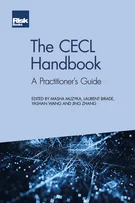Assessing Country Risk: A Practical Guide
Pascaline della Faille
Preface: Two economists’ views on the bank-sovereign linkage
Introduction
Assessing Country Risk: A Practical Guide
Sovereign Risk: Characteristics, History and a Review of Recent Research
The Arab Spring: Insights for Political Risk Analysis
The Eurozone Crisis: The Forgotten Risks of Private and External Debt
How the Eurozone Crisis Became a Banking Crisis, and the Risk of Japanisation
The Changing Dynamics of Country Risk
Capital Flight as a Political Risk Indicator
Debt Crisis Indicators of Emerging Markets versus Eurozone Economies
How Much Economic Capital Could European Banks Save? The Case for Optimal Sovereign Risk Allocation
Fixing Fundamental Flaws in Probabilistic Country Risk Models
Have We Learned the Country Risk Management Lessons of the 1997 Asian Financial Crisis?
Using Systems Thinking to Enhance Country Risk Assessment
Approaches to the Quantification of Country Risk
Stress Testing Across International Exposures and Activities
This chapter is intended as a practical guide to assessing the major country risk factors, namely political risk, external imbalances, public finance imbalances, banking sector vulnerability and business environment. Concrete examples, such as the 2014 conflict in Ukraine, the accumulation of payment delays in Venezuela, the Kazakhstan banking crisis and exchange rate volatility in Turkey will illustrate each component of country risk.
This chapter is largely based on the author’s experience as country and sector risk coordinator at Delcredere | Ducroire, the Belgian public credit insurer, which was a pioneer in country risk assessment and hence contributed substantively to the development and improvement of the country risk assessment model within the framework of the OECD’s Arrangement on Officially Supported Export Credits. Delcredere | Ducroire (a member of the Credendo Group) chairs this working group and runs the quantitative model on which the common country classification is based.
Assessing country risk is challenging for many reasons. Indeed, country risk is a vague concept compared to sovereign risk, which is defined as the risk that a state (the central bank or
Copyright Infopro Digital Limited. All rights reserved.
As outlined in our terms and conditions, https://www.infopro-digital.com/terms-and-conditions/subscriptions/ (point 2.4), printing is limited to a single copy.
If you would like to purchase additional rights please email info@risk.net
Copyright Infopro Digital Limited. All rights reserved.
You may share this content using our article tools. As outlined in our terms and conditions, https://www.infopro-digital.com/terms-and-conditions/subscriptions/ (clause 2.4), an Authorised User may only make one copy of the materials for their own personal use. You must also comply with the restrictions in clause 2.5.
If you would like to purchase additional rights please email info@risk.net





